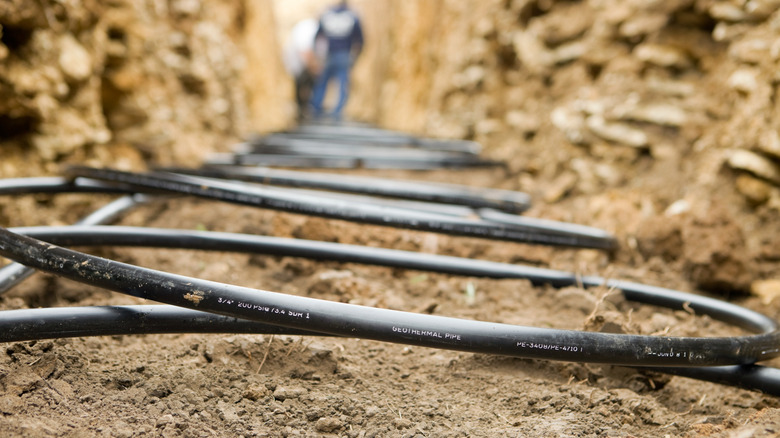How A Simple Geothermal Pump Could Transform Your Heating And Cooling Bills
Heating and cooling are as important as shelter itself. It's vital that your home protects you from temperature extremes, but with ever-increasing energy prices and concern about climate change, many of us are desperate for options that keep us comfortable and safe without hitting our wallet or the planet too hard. Geothermal pumps may be the solution to many conundrums caused by fossil fuel-based heating and cooling. Burrow about 10 feet into the earth, and the temperature is reliably between 50 and 60 degrees Fahrenheit in most places. A geothermal pump taps into this consistent temperature to heat your home in the winter and cool it in the summer. These pumps swap out your home's undesirably hot or cold air for the heat in the ground, saving you up to 65% compared to other heating and cooling methods, according to the U.S. Department of Energy.
There are two types of geothermal pump system — open loop and closed loop — and both involve digging into the earth. Open-loop systems circulate water through underground wells and typically flow into an external body of water. Closed-loop systems rely on a connected loop of pipes for circulating refrigerant and are placed either vertically, horizontally, or running through an underground body of water.
Heat produced and contained by the earth is renewable and has the potential to liberate your home from costly and polluting fossil fuels. According to the US Environmental Protection Agency, geothermal heat pumps are the smartest choice for home heating and cooling when you consider the potential cost and energy savings they provide. With all these winning features, heat pumps seem like no-brainers to help reduce energy costs at home.
Breaking down the cost factors
If you're wondering whether a geothermal heat pump is right for your home, the most influential factor is probably its initial price tag. Getting set up with a geothermal pump could set you back as little as $4,500 and up to $27,000, with the average cost around $15,000, according to 2025 data from Angi. The vast range of prices boils down to what type and size pump you'll need and how much work it will be to install.
There's a laundry list of factors for which kind of pump setup will work for you and what installation will cost. These include geography, geology, home size, existing HVAC system, and the type of pump loop you're installing. A professional will be able to put their finger on the type that will work for your circumstances. The least expensive and invasive are open-loop arrangements, since they take advantage of existing groundwater. However, not every property has this availability. Homes with smaller lots may have to resort to vertical loops since horizontal ones need space to spread out. This process is more work-intensive, since it involves digging deeper into the earth.
Although the future of tax credits for making environmentally friendly investments in your home is a little uncertain right now, one certainty is that investing in a geothermal pump can increase your home's value. This eco-friendly feature has major potential for top return on investment. As long as your pump is installed correctly, it takes little to no maintenance on your part, and it can last for over 20 years, with the underground infrastructure lasting for up to 50 years.

